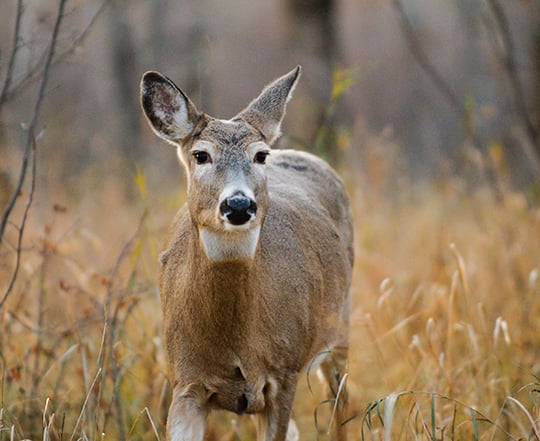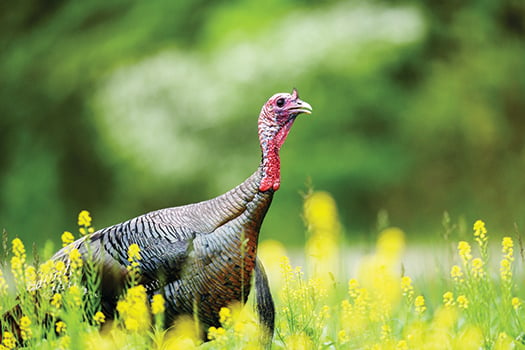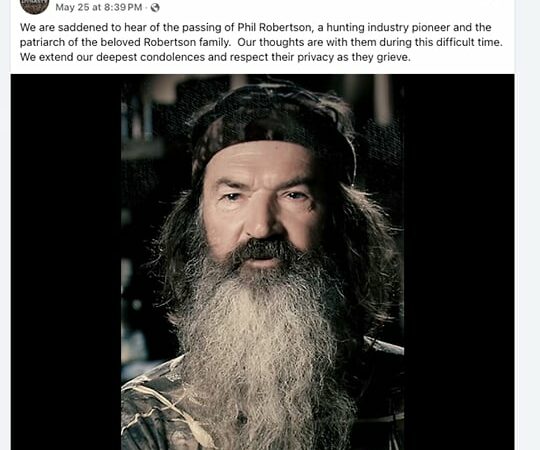Is it necessary to be there before daylight? Try this different approach during firearms deer season – Outdoor News

For most of my deer hunting career, I made sure to get to my tree stand, ground blind, or cushion at my hunting location while under the cover of darkness during firearms season.
The rationale was to give nearby deer time to forget about any noises that I made, allow my scent to dissipate, cool down from my walk, organize my equipment, and get quiet well ahead of legal shooting time.
My senses of taste, smell, and touch do not come into play, but while awaiting the woods to awaken, it fully tests the capabilities of my sight and hearing.
At first light, a few suspicious, deer-like shapes transform into downed tree limbs once the light gets brighter. As dawn takes hold, slow-moving ghost-like shapes that are truly owned by deer begin to materialize and the reward for arriving early is sometimes delivered.
MORE WHITETAIL COVERAGE FROM OUTDOOR NEWS:
Ryan Rothstein: Ready or not, the ‘grind’ of the rut is here
The right light settings, and other factors to help get in and out of the deer woods undetected
Glassing during the rut? Here’s why binos are the best tool at your disposal in November
Before COVID-19, I used to stay with the family that owns the woods where I hunt, a 2¾-hour drive away from my home. Since then, I have been driving there and back each day. To get there by legal shooting time requires a departure by 3:30 am at the latest.
However, it makes me nervous to drive through deer-dense counties in the wee hours before daybreak with hunter-displaced deer scattering about and roaming bucks still seeking receptive does.
So, now I try instead to time my drive down so that I have some faint light to see deer in the road when I am driving through the highest deer population counties closer to my destination.
Last season, I cemented my justification for showing up later. Upon approaching the edge of the woods just after sunrise, I began deliberately sneaking toward my ground blind, behaving as if there were deer within range.
The previous week I had erected the blind and left my folding chair in it next to a row of round hay bales overlooking a creek. As I reached the closest hay bale, I peeked over the top of it and saw a young buck standing only about 20 yards away.
Not interested in tagging a buck, I lowered myself back down, removed my camera from its case, and took several photos of it while remaining hidden. The result was some head-on images of the buck in the soft morning light that photographers relish.
Soon thereafter, I noticed a doe that was largely obscured by a thicket of multiflora rose feeding on its tart red fruits a little bit closer to my position.
They were both too close for me to sneak the five remaining yards to my ground blind and my waiting hunting chair. After I was satisfied that I had taken enough photos of the buck and a few pictures of the mostly hidden doe, I sat behind the bales to wait for them to leave.
A few minutes later, a 13-point, heavily-palmated trophy buck, which had trailed the estrus doe to her present location 15 yards away from me, chased away the smaller buck into the center of the woods, away from the busily feeding doe.
A few minutes later, the big buck returned and claimed the honor of escorting the doe until she finished nibbling her fill of the nutritious, vitamin-filled fruit.
Finally, around an hour after sunrise, the doe walked out of sight down into the creek bottom, with the buck trailing closely behind. This gave me my opportunity to sneak into my blind.
When they first emerged climbing up the backside of the creek bed, I was able to take many pictures of the big buck as the doe lingered around to feed on beechnuts 40 yards away.
When she began to wander toward a favored bedding area, I lifted my shotgun and placed the barrel on my tripod. She paused long enough to allow me to place a shot through her heart and fill my tag.
Meanwhile, the lovestruck big buck remained standing near his fallen companion for about five minutes, allowing me to add more pictures of this trophy specimen on my camera and cell phone to send to my hunting friends.
After briefly trotting off, he returned for another five to 10 minutes before circling downwind of my position and after finally detecting my scent, departing the scene.
About an hour later, another buck, a small 8-pointer, walked to within 15 yards of me while following the drag marks of the dead doe as I basked in the unseasonably warm 55-degree sunshine.
I filmed him with my cell phone camera in video mode, while sitting out in the open in my folding hunting chair, fully visible in my orange hunting jacket, after taking down and packing my blind into its carrying case.
Had I arrived in the dark that morning, I may have spooked away the original pair of deer unseen and not witnessed the dramatic morning spectacle. It cemented my belief that getting to the woods before daylight is unnecessary, as long as my arrival still occurs before deer migrate past my blind location to their morning bedding areas.
This coincides with many years of observations at this location. Even when I used to get into my blind before daylight, peak morning movement was predictably around 8:15 a.m. to 9 a.m.
There is usually some intermittent daytime activity before the most common deer sightings begin about 45 minutes before sunset and last until I can hear, but not see them.
Because it usually gets too dark for me to see into the woods even before sunset, I have not taken advantage of the now-legal 30 minutes of shooting time after sunset.
For me, hunting from sunrise to sunset makes more sense to me than spooking unseen deer in the dark. I can more carefully avoid making noise from snapping sticks, brushing against brush, or shuffling leaves in the gray light, while carefully scanning ahead to search for deer before taking each step.
Arriving to my deer stand at first light will remain my morning hunting strategy.







